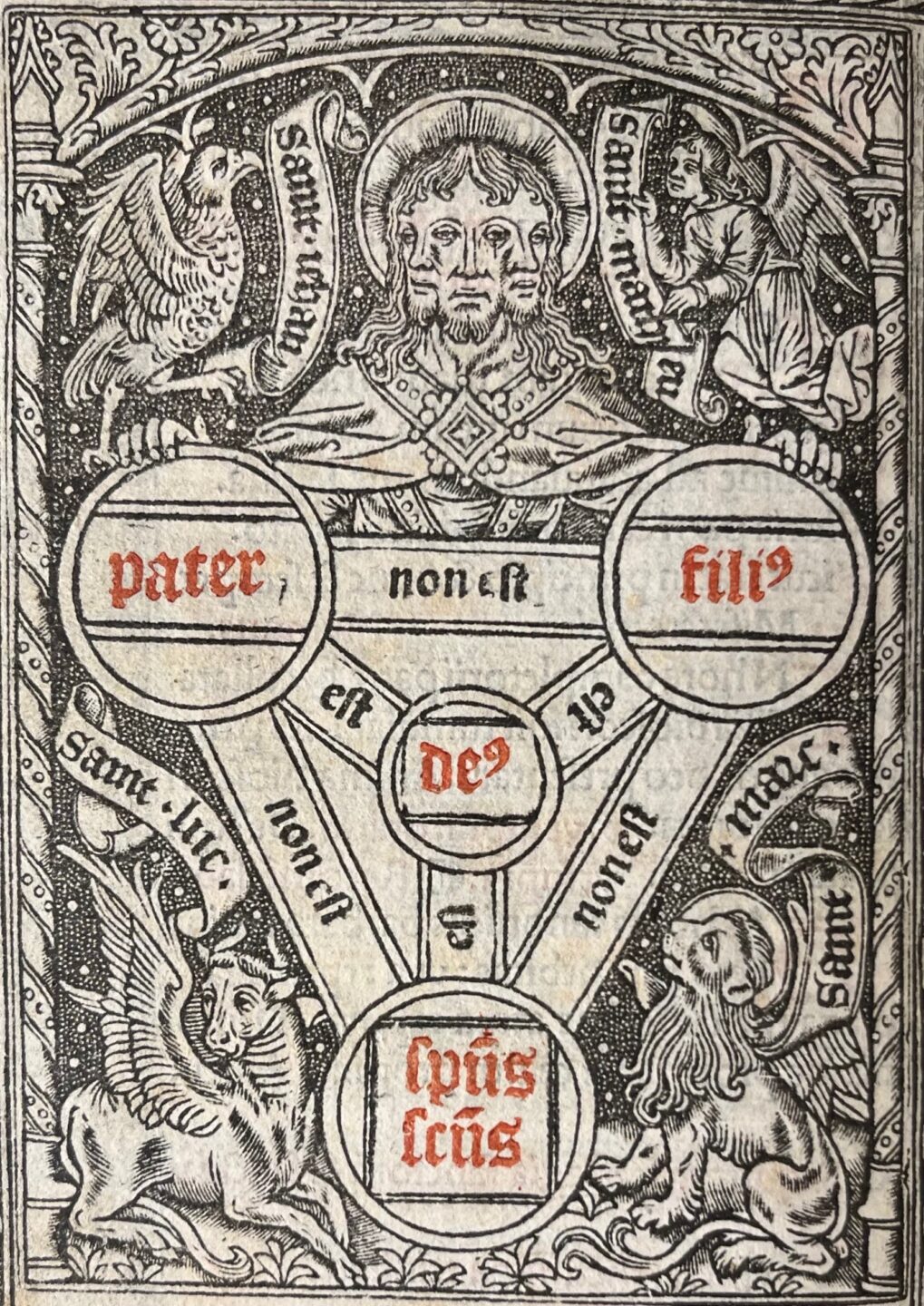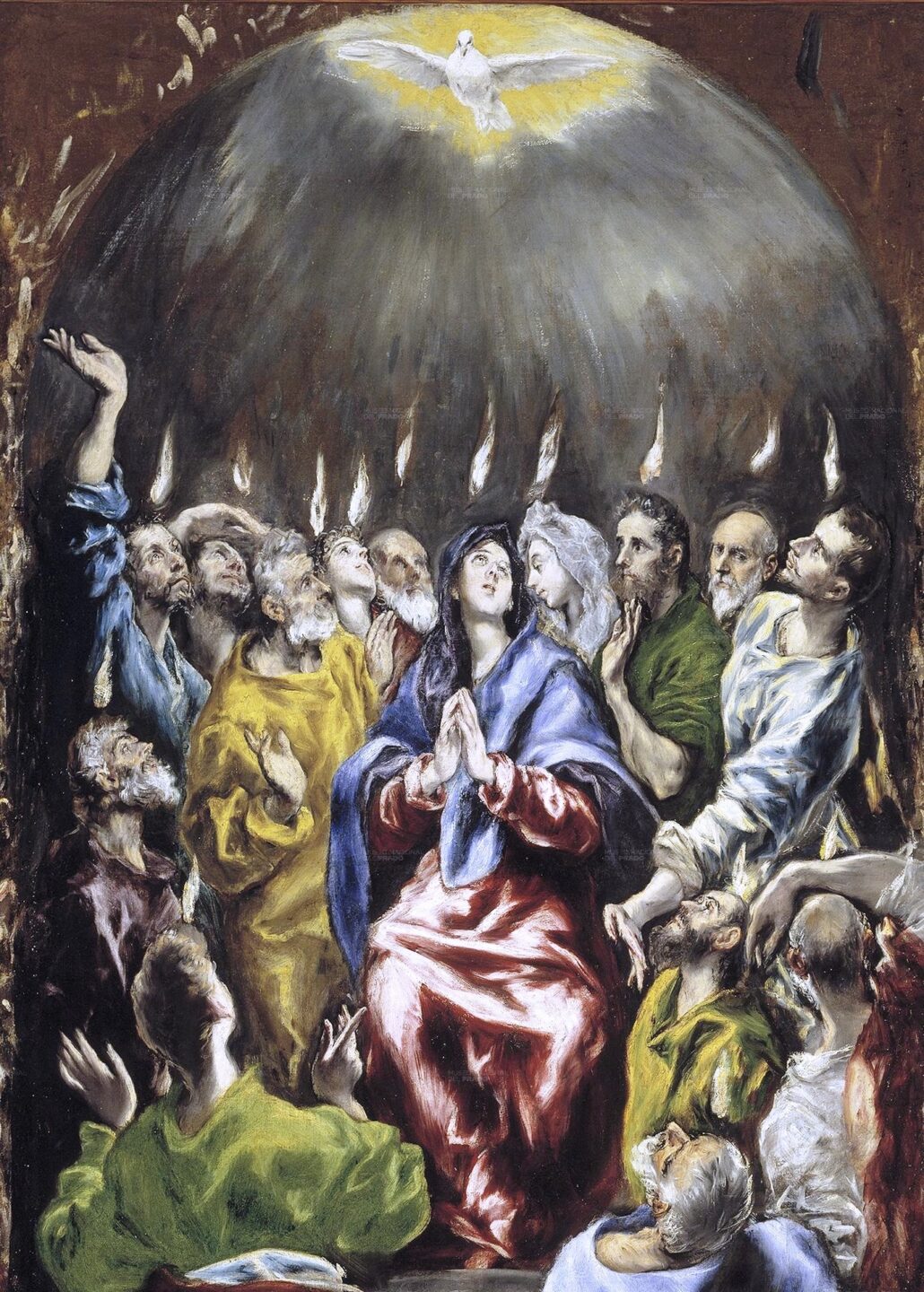Fifty days after Easter, Christians celebrate the gift of the Holy Spirit made by God to men: it is Pentecost. A key stage in the New Testament, this episode opens a new era: that of the Church. How was the last identity of the Trinity represented?
In the name of the Father, of the Son and of the Holy Spirit. It is by pronouncing these words that Christians sign themselves and affirm their Trinitarian monotheism. Nine days after the Ascension of Christ to the Father, the Holy Spirit appears to the disciples. Mysteriously, through a noise “like the blast of a mighty wind” (Acts 2:2). This gift of God given to men was a promise of Christ: “the Helper, the Holy Spirit, whom the Father will send in my name, will teach you all things, and will remind you of all that I have spoken to you” (John 14: 26). The Holy Spirit being a “force” to guide the faith of believers, it was necessary to interpret his precepts in the biblical text. Also, in his Summa theologicaSaint-Thomas Aquinas formalized the seven gifts of the Holy Spirit, which the believer receives: wisdom, intelligence, science, strength, counsel, pity and fear.
An enigmatic identity
In the scriptures, many images and symbols are used to portray this “Spirit of God.” It is both the dove descended on Christ during his baptism in the Jordan, the divine hand and its rays of light, or even the seven tongues of fire, a nod to the seven gifts of God. More subtly, the Holy Spirit is also symbolized by the sensitive traces of his passage: “The wind blows where it wills: you hear its voice, but you know neither where it comes from nor where it is going. So it is with those who are born of the breath of the Spirit.” (John 3:8). Finally, certain symbols, such as energy, living water, charity, strength, or the gift, remain difficult to figure, because they are too abstract.
Difficult to identify due to its invisible nature, the Holy Spirit is under-represented in art. According to the historian of Christian art, François Boespflug, his representation is “devoid of a solid theological foundation”, which is why “he is not an icon”. Also, its figuration is mainly standardized around the images of the dove, the tongues of fire of Pentecost, or even the divine hand.
The exception of the triandric trinity

In the Middle Ages, an iconographic model of the Trinity representing three men had succeeded in becoming popular: the so-called “triandric” trinity. The Byzantine tradition represented the Trinity in the symbolic form of three angels received at Abraham’s table, called Philoxenia of Abraham. Rublev’s famous Trinity (circa 1410) is the best known example. But in 1745, Pope Benedict XIV forbade the representation of the Holy Spirit, separately from the Father and the Son. And in 1928, a decree of the Holy Office (ancestor of the Congregation for the Doctrine of the Faith) put an end to all anthropomorphism to represent the Spirit.
“The whole economy of salvation, from the Christian point of view, is oriented towards Christophany”, that is the manifestation of Christ”, notes François Boespflug. Also, the last identity of the Trinity cannot, theologically, “compete” with its two consubstantial co-identities. However, it presents itself as the binder, revealer and agent of faith. “The Spirit prepares men, warns them by his grace, to draw them to Christ”, teaches the Catechism of the Catholic Church. The mystery of the Holy Spirit therefore lies at the heart of the believer’s intimacy of faith. And the sacraments of baptism and confirmation materialize the union. (cath.ch/jds)
© Catholic Media Center Cath-Info, 03.06.2022
The rights to all content on this site are registered with Cath-Info. Any distribution of text, sound or image on any medium whatsoever is chargeable. Registration in other databases is prohibited.
We want to give thanks to the writer of this short article for this outstanding material
Draw me the Holy Spirit – Swiss Catholic Portal
Check out our social media profiles as well as other related pageshttps://nimblespirit.com/related-pages/

